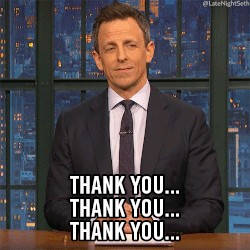The stock market barometer of Singapore, the Straits Times Index, is now down over 900 points since its high seen earlier this year.
In terms of percentage, the index has plunged almost 30% to 2,320 at the time of writing on Thursday.

In just two days since I last looked at the Straits Times Index, it has already shed another 180 points.
The plunge can be mainly attributed to the crumbling shares prices of the three Singapore-listed banks — DBS Group Holdings Ltd (SGX: D05), Oversea-Chinese Banking Corporation Limited (SGX: O39) and United Overseas Bank Ltd (SGX: U11) — which collectively take up close to 40% of the index.
With the banks’ tumbling share prices, investors might be wondering if there’s value in the banks’ shares at their latest stock prices.
To help answer that, let’s compare the historical price-to-book (PB) ratios, price-to-earnings (PE) ratios, and dividend yields of the three banks with their current valuations.
(To make our lives simpler, the banks’ annual reports provide a comprehensive comparison of the historical valuations. So, thank you DBS, OCBC, and UOB!)

Bank #1: DBS
First, let’s look at the biggest bank of ’em all, DBS.
The table below is a snapshot of DBS’ valuation from 2015 to 2019:

Here’s a quick analysis of DBS’ past valuation:
- DBS past dividend yield (excluding special dividends): Ranged from 3.1% to 4.8%, with an average of 4.2%
- DBS past PE ratio: Was between 9.3x and 12.3x, translating to an average ratio of 11.1x
- DBS past PB ratio: Fluctuated from 0.9x to 1.5x, giving an average of 1.2x
Right now, DBS share price is S$17.48, which translates to the following valuations (based on last 12 months data):
- DBS dividend yield: 7.0% [forward dividend yield: 7.6% (more on that later)]
- DBS PE ratio: 7.1x
- DBS PB ratio: 0.9x
DBS said in its 2019 earnings release that it plans to dish out an annualised dividend of $1.32 per share going forward, instead of $1.23 as declared for 2019.
Using the guided dividend payout, DBS’ dividend yield rises from 7% to 7.6%, as shown earlier.
Currently, DBS’ dividend yield, PE ratio, and PB ratio are all better than average.
Bank #2: OCBC
Next up, let’s look at OCBC’s valuation from 2014 to 2018 (OCBC’s 2019 annual report is not out yet):

Here’s a quick look at OCBC’s past valuation:
- OCBC past dividend yield: Ranged from 3.5% to 4.2%, with an average of 3.7%
- OCBC past PE ratio: Was between 10.4x and 11.4x, translating to an average ratio of 10.8x
- OCBC past PB (or price-to-NAV) ratio: Fluctuated from 1.0x to 1.3x, giving an average of 1.2x
Right now, OCBC share price is S$8.10, which gives the following valuations (based on last 12 months data):
- OCBC dividend yield: 6.5%
- OCBC PE ratio: 7.1x
- OCBC PB ratio: 0.8x
OCBC’s 2019 valuation data is not yet available, but to my knowledge, given the bank’s steep fall in share price right now, its latest dividend yield, PE ratio, and PB ratio should be all better than average.
Bank #3: UOB
Last but not the least, let’s explore UOB’s valuation from 2014 to 2018 (just like OCBC, UOB’s 2019 annual report is not available yet):

Here’s a quick analysis of UOB’s past valuation:
- UOB past dividend yield (including special dividends): Ranged from 3.4% to 4.5%, with an average of 4.0%
- UOB past PE ratio: Was between 10.0x and 11.7x, translating to an average ratio of 11.1x
- UOB past PB ratio: Fluctuated from 1.0x to 1.3x, giving an average of 1.2x
Right now, UOB share price is S$18.36, which translates to the following valuations (based on last 12 months data):
- UOB dividend yield (including special dividend): 7.1%
- UOB PE ratio: 7.2x
- UOB PB ratio: 0.8x
UOB’s 2019 valuation data is not out yet. However, as far as I know, given UOB’s steep fall in share price, its latest dividend yield, PE ratio, and PB ratio are likely to be better than average as well.
(Writer’s note: This article will be updated with OCBC’s and UOB’s 2019 data once they’re available.)
Putting It All Together
For those who have been following Singapore bank stocks closely, you would have already guessed that they are selling at cheap valuations given their steep declines in the share price of late.
A warning, though: Low valuation doesn’t make a company an automatic buy. We must first understand whether its business is resilient enough to emerge unscathed from a possible recession.
For those who are keen on DBS shares, its chief financial officer Chng Sok Hui gave the following outlook in DBS’ 2019 annual report:
“We had entered 2020 with healthy underlying business momentum. We expected mid-single-digit percent loan growth and double-digit percent fee income growth, similar to 2019, with the impact partially offset by a lower net interest margin due to falling interest rates. At the time of writing, the Covid-19 virus outbreak has caused some uncertainty to our original expectations. If the outbreak is contained within a few months, there would be only a modest shaving to total income growth. Whatever the outcome, we will weather the uncertainty with nimble execution and a strong balance sheet that has ample capital, liquidity and general allowance reserves.”
My take is that all three local banks have strong balance sheets to be able to weather through the Covid-19 storm.
Having said that, the banks could see their share prices fall even further before potentially recovering. Investors who are considering investing in Singapore banks must be able to stomach this volatility.
What’s Your Take on Singapore Banks?
Check out the Seedly Community and participate in the lively discussion regarding banks stocks and more!
Disclaimer: The information provided by Seedly serves as an educational piece and is not intended to be personalised investment advice. Readers should always do their own due diligence and consider their financial goals before investing in any stock. The writer may have a vested interest in the companies mentioned.




